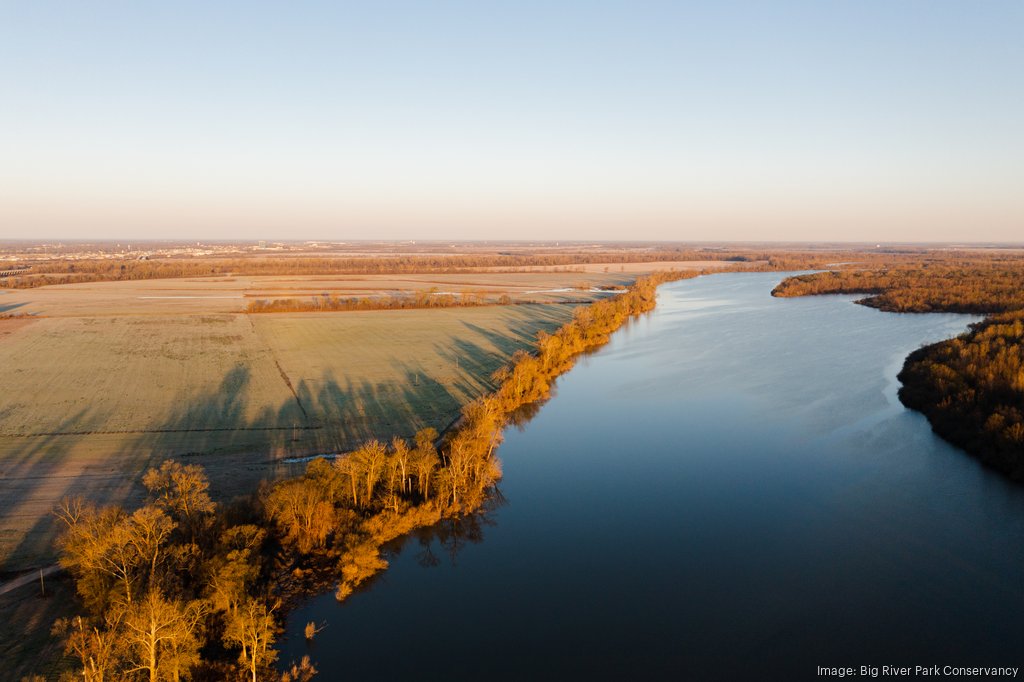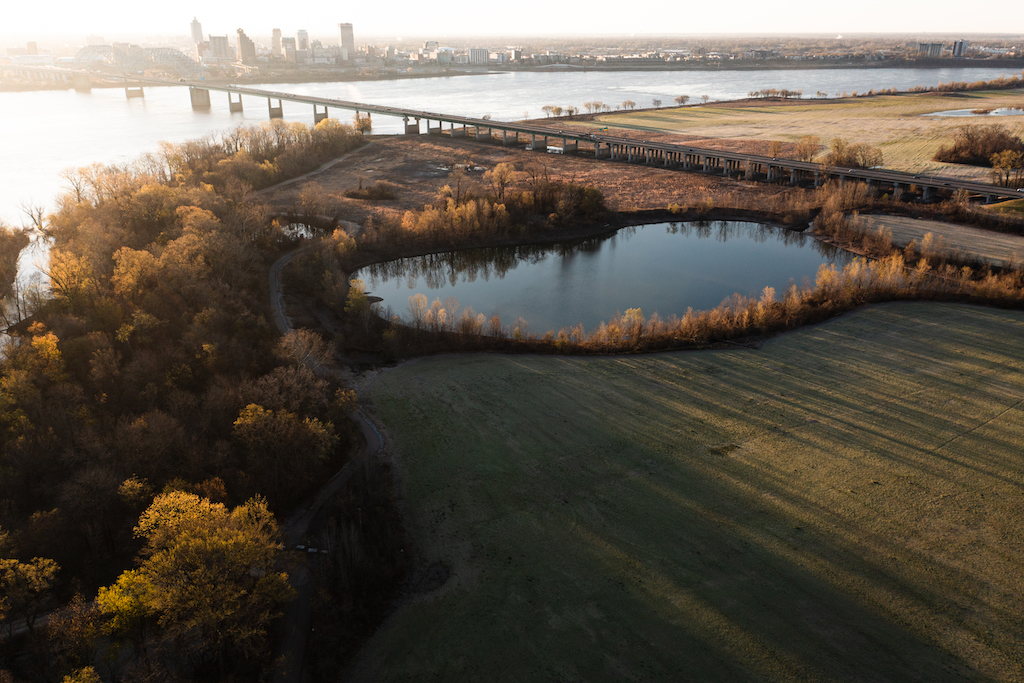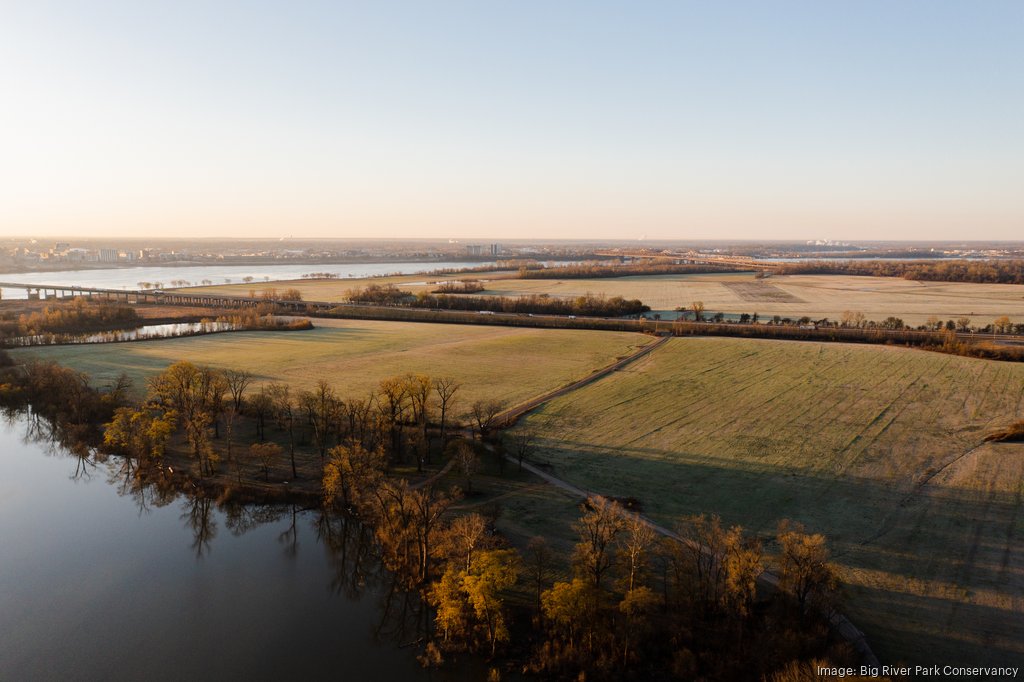The Inflation Reduction Act (IRA) established the Community Change Grants program to advance community-driven environmental and climate justice activities to benefit disadvantaged communities through projects that reduce pollution, increase community … Read more
The banks of West Memphis, Arkansas, and Memphis, Tennessee are home to major freight and transportation routes; however, flooding from the Mississippi River mainstem poses a significant risk to these floodplain-dwelling infrastructure.
Project Location:
West Memphis, Arkansas
Contact:
City of West Memphis
Funding Programs:
USDOT Promoting Resilient Operations for Transformative, Efficient, and Cost-Saving Transportation (PROTECT) Discretionary Grants Program
Project Description
By implementing nature-based solutions like restoring wetlands and planting new hardwood forests, this project aims to protect ecosystem health in addition to major transportation arteries from unnatural disasters. Activities will also include creating outdoor recreation opportunities in the city of West Memphis through parks and multi-use trails. The City of West Memphis is the project lead along with partner support from Ducks Unlimited, Big River Park Conservancy, TennGreen Land Conservancy, and Arkansas Department of Transportation.
Funding Breakdown
- Overall Project Cost: $20,194,437.25
- Non-Federal/Local Match: $4,038,887.45 (20% of total)
- PROTECT Grant Request: $16,155,549.80 (80% of total)
Interview
Thank you to Matt Hayes of Alta Planning + Design, Inc. for providing his insights from the application process.
What advice would you have for someone else applying to this program?
When applying, it’s essential to have a well-thought-out project. If you’re still developing ideas, planning grants can be helpful. Ensure your project is viable by involving engineers and scientists and conducting thorough studies. For our project, completing the land acquisition in advance of applying was key, which we believe minimized risk and helped secure federal funding.
Political support is also important. Engage in lobbying and have a lobbyist communicate with the State Department of Transportation, USDOT, the Secretary of Transportation, or congressmen/women. Providing matching funds shows commitment and can increase your application’s competitiveness. The application process can be complex, especially for things like Benefit-Cost Analysis, so having a specialist is critical. Be prepared to invest $50,000 to $75,000 in the grant writing process.
Carefully read the Notice of Funding Opportunity (NOFO) and make sure your project aligns with current administration priorities. For example, the current Department of Transportation is focused on equity through the Justice40 initiative.
Finally, wide-ranging collaboration is key – the more partners, the better for gaining community support. Our project team spans from local governments and advocacy groups to national non-profits.

What challenges did you come across and how did you navigate them?
Determining the right amount of funding to request was a major challenge. Projects often cost more than expected, so it’s crucial to understand the project and work with an experienced cost estimator.
Make sure to ask for enough money and be aware that federal funding schedules are usually longer. Having the right tools and documentation, like maps and GIS capabilities, is essential. A one-page executive summary helps federal reviewers quickly grasp key information. The Notice of Funding Opportunity provides guidelines for scoring high; keep it handy while writing your application to ensure alignment.
What were the areas of support that helped you in the process?
One key area of support was determining who would administer the funding. If a small town isn’t able to manage this, the State DOT might step in to help. It’s important to identify and lean on partners who have the capacity and experience to handle the administration effectively.
Did you have a budget and/or plans for monitoring and measuring project success?
Yes, most DOT grants require discussions about ownership and maintenance. It’s crucial to address who will maintain the project, especially when working with multiple cities or agencies. This can be a challenging aspect, but demonstrating a strong commitment to maintenance can improve your chances of securing funding. Make sure the responsible agency is fully committed to maintaining the project.
Is there anything else you’d like to add?
Working with the DOT can be challenging because there are so many grants available. Municipalities and counties often feel overwhelmed, especially when faced with 100-page Notice of Funding Opportunities. Most people struggle to keep up and find it hard to determine which grants are worth pursuing.



